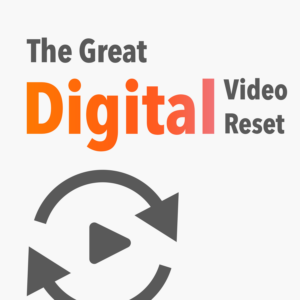The Great Digital Video Reset: It’s time we rethink ‘premium’

Authored by: Jordan Bitterman, CMO, TripleLift
It’s no secret that the pandemic has catapulted the video habits of consumers years into the future. Brands are now at a crossroads: recognize and meet this shift in consumer behavior or risk getting left behind.
Think about your own viewing habits over the past year. You watched hundreds of shows, on dozens of apps, across every connected device. Whether you were binge watching Tiger King from your couch, rewatching another “How To” video for banana bread on your tablet or perhaps catching up on the latest political blunder out of Washington on your phone, your consumption habits – without you even realizing it – were evolving. Your viewing habits couldn’t be more modern and more digital. Yet the ads you are served are not.
The truth is that we’ve been buying video the same way for decades
Advertisers are caught in the middle of this shift. Consider that since the 1980s, roughly 95% of all video ads have run in traditional ad breaks (or in layman’s terms; a commercial running in the middle of a show).
Since the Reagan administration video ad infrastructure has been fixated on reaching consumers by interrupting the content they’re watching. That made sense when our choices were limited to ‘should I watch Friends or watch The Simpsons?’
There is a lingering bias that video ads running as commercial breaks within long-form content are far more valuable than any other kind of video ad. Yes, it works. And yes, it’s easy. If you have a 15-second spot produced for television, you can easily run it online. But if we’re honest about it, as an industry, we just copy and pasted our way into digital channels.
Spots – including instream – are the only kind of video advertising that has universally been considered “premium.” But, that’s a little odd when you think about it.
A new definition of premium video
I certainly won’t argue against the immersive power of a brand running an ad in a network-produced show, but if consumers are taking a great deal of their viewing elsewhere (and we know they are – every show I mentioned earlier was trending, and not on network TV), brands need to change their mix as well.
If our industry has any chance at keeping pace with the modern consumer, brands need to rethink their definition of premium video. And that can’t just mean buying TV ads elsewhere…
It should be defined with three criteria in mind.
- Quality. A TikTok is comparable in quality to a streaming tv show if the audience loves it. Therefore, quality can no longer be defined strictly by the medium, the format,the device or even the amount of time it runs. Brands or agency buying departments might make these distinctions, but consumers don’t. Quality is anywhere viewers bond with video.
- Relevance. As long as an ad is relevant and engaging to the consumer, it doesn’t matter if it’s delivered within a commercial break on a connected television or within an article on a news site. Modern consumers don’t discriminate against a video ad based on the medium. Relevance is judged by its context to the content.
- Effectiveness. According to survey data from the IAB, if a video ad is contextually relevant, the effectiveness of the ad – regardless of the medium – increases by 21%. Engagement, awareness, and purchase intent can all be increased by video ads that run outside the break. Effectiveness is all about the return.
A new balance in video advertising
The good news is that things are already changing on the buy side.
Today, only half of digital video ads are considered ‘in-break.’ That’s down from the cumulative 95% figure from over the last 40 years. The other half is made up of ‘in-feed’ – video ads appearing when people scroll through Facebook, Twitter and the open web – and, ‘in-show’ – brands appearing inside actual programming.
This buying shift is happening for good reason. Digital video usage is up with viewers expected to spend over 76 minutes per day watching online video this year, according to eMarketer’s latest projections.
We all know the moments in our industry where consumers race ahead and leave brands, publishers and ad tech behind. Apple unveiled the iPhone, ushering in the app era. Netflix rolled out streaming, forever-altering content discovery. We’re in the midst of another tectonic shift, this time in digital video advertising.
It’s crucial for buyers to rethink and reset their video approach as soon as possible. In the scroll and stop era, Marketers have a chance to elevate their digital video ads and give viewers the premium experience they’re looking for. If not, digital video advertising may miss its chance altogether, and stay stuck in the past.
The post The Great Digital Video Reset: It’s time we rethink ‘premium’ appeared first on TripleLift.

